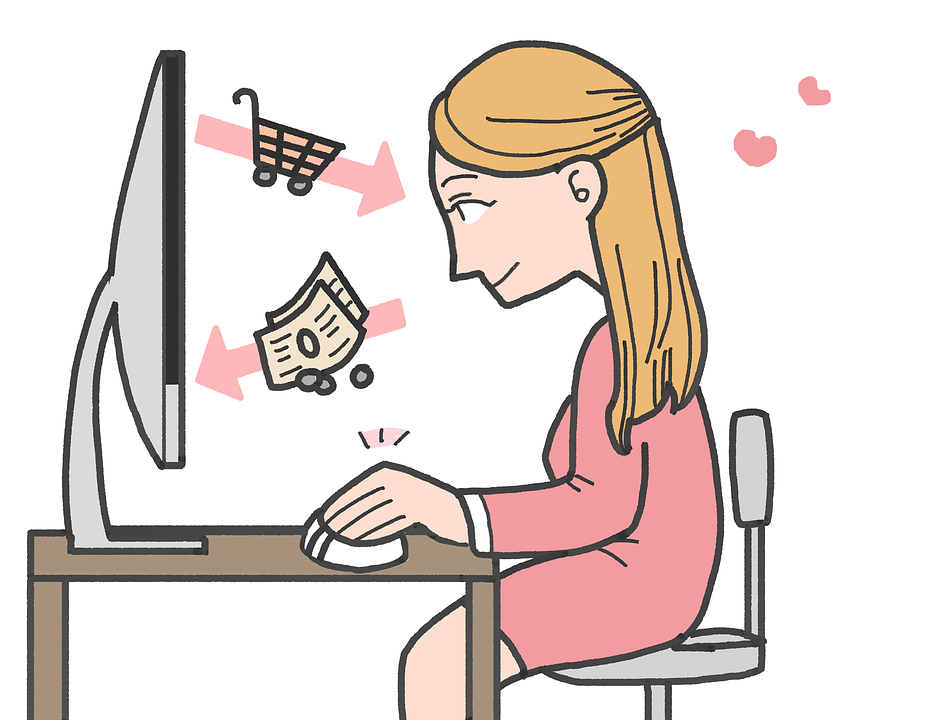Before the internet it was tough to make informed purchase decisions. The only way to research products and services was to find printed information on them, ask a friend, or watch a commercial about it.
This was the golden era for TV advertisement and cold-calling salespeople. All they had to do was make a convincing pitch, drum up some enthusiasm in the listener, and strike while the iron was hot.
Ever since the birth of Google and fast-loading websites, purchases have been changing. As technology has advanced, so have consumers. Before buying anything, they want to look up reviews and research. They want to make sure they’re making the right choice, and they want to make sure they’re not getting jipped.
Hard sells and aggressive sales tactics are no longer effective. In fact, they are harmful and breed mistrust. So, if traditional “outbound” marketing is phasing out, how can businesses reach out to consumers?
The New Way to Market
Inbound marketing is the answer. Instead of trying to force sales gimmicks onto consumers, it delights them and educates at their own pace. Inbound marketing has recognized the new way purchases are made and has dubbed this process ‘The Buyer’s Journey’.
1. Awareness
“I am experiencing a problem.”
2. Consideration
“I now realize what my problem is, now I’m going to look for a solution.”
3. Decision
“I have found that a few solutions might work for me, now I have to decide which will be my choice.”
The overall goal of inbound marketing is to help move the buyer along in their journey and encourage conversion. In order to do this, it’s important to have a solid understanding of the buyers. This is where buyer personas come in.
A buyer persona is a fictional representation of a business’s target customer. Each persona is defined by characteristics such as behavior patterns, demographics, concerns, goals, and more.
By defining your business’s unique buyer personas, marketing campaigns can be created to effectively target the problems and desires of your audience. If you haven’t yet defined your own business’s buyer personas but would like to, start with this easy guide.
Inbound marketing can be grouped into 4 phases. They are outlined below along with the different methods applied in each phase.
1. Attract (Strangers ⇒ Visitors)
- Content
Content is most commonly found in the form of a blog, but content can be a number of different things: white papers, ebooks, podcasts, infographics, videos.. No matter the form, every effective content piece has the same purpose: to educate and delight the audience.
By producing content regularly, you are answering the questions your buyer personas have along their buyer’s journey. This helps them to move along into the next phase and points them in the direction you want them to head. In the end, they will be educated enough to make an informed decision.
- Search Engine Optimization (SEO)
Unless a user happens to know your direct URL off-hand (slim odds) they are going to enter a few words into a search engine, and hopefully your business pops up. If your business is on the last page of search results, it’s unlikely they will ever visit your website. The big challenge here is that virtually everyone without a website is trying to rank higher.
So how can you win with so much competition? Through a solid SEO approach of course! The basic concept of this is to target the right keywords instead of strictly the obvious and popular ones. By strategically placing keywords in website content, Google will begin ranking your website where it belongs.
- Social Media Marketing
With 2.22 billion users on social media worldwide, this the best platform to connect with them and establish a brand identity. Posts that are targeted to buyer personas will make your business more relatable and add a personality.
By posting often, your business profile will gain more connections and attention. This is also a great way to share blog posts and attract website traffic. Instead of searching Google, many users will even expect to find your business on social media with contact information, operating hours, and recent news.
- Optimized Pages
Inbound marketing is focused on a modern audience. It has adapted from traditional marketing as users have adapted with technology. A strong online presence is a big piece of inbound, which is why a user-friendly website is crucial.
Having an optimized website design means that each page can consistently be viewed from all devices; from desktop, to mobile, to tablet. In the U.S., the percentage of mobile-only users now exceeds desktop-only users., making optimization a priority.
2. Convert (Visitors ⇒ Leads)
- Calls-To-Action (CTA)
This term may seem foreign to you, but you’ve definitely seen calls-to-action before and may even have clicked them. They encourage the visitor to take an action like ‘download now’ or ‘click here’. These buttons, text, or images are placed in obvious areas so that they can’t be missed. They stand out from the background and often have bright colors and bold text.
Each action, when placed effectively, relates to the page they are on with the assumption that the user is probably interested in knowing more about the topic. The item downloaded is called a ‘content offer’.
- Landing Pages
After the user clicks on the CTA, they are brought to the landing page. This page’s sole purpose is to explain the benefits of the content offer and why they should download it. Text should be brief and concise, showing how easy it will be to attain the prize (content offer).
- Contact Forms
Before a visitor is able to download the content offer referred to in the CTA and landing page, they must fill out a form. If the content offer is targeted effectively to them and their interests, this small extra effort will not phase the user. Most forms ask for a name, email address, and occupation.
More questions in forms will gather more demographic information and further define buyer personas, but it is important not to ask too many questions. Forms should be easy, quick, and uncomplicated to fill out. When the visitor submits this information, they become a qualified lead which you can market to directly in the future.
3. Close (Leads ⇒ Customers)
- Workflows
Workflows are a series of strategically created and scheduled emails. When the user submits information into the contact form to get their free download, it automatically triggers workflows to begin.
The first email is to thank them for their download and to provide them with another link to it. They continue typically once a week for the following 4-6 weeks, each including a whitepaper, blog post, or some other type of content. This approach nurtures the lead and establishes your business’s credibility.
- Effective Contact Page
This may seem like a more obvious one, but it is often neglected. Like the contact forms, your contact page should be to the point. Although it may be tempting to include many different questions to narrow in on the situation before responding, this will overwhelm and deter some users. Try to cut it down to what is completely necessary.
A/B testing, a method in which a web designer tests small design elements against each other, is helpful here as well. It may be that your buyer personas prefer specific colors or wording and this is standing in your way. The only way to determine for sure is by collecting real data from testing.
4. Delight (Customers ⇒ Promoters)
- Stage-Focused Content
Continue providing users with helpful content even after they’ve made their purchase. Update them on your new services. Tailor blog posts, content offers, and emails to instruct how to get the most out of your products. Show that you still care!
Any successful business knows that to grow, they need to continue nurturing a relationship with customers at every stage.
- Reviews and Surveys
Did you know that online reviews impact 67.7% of respondents’ purchasing decisions? Having a customer reviews page on your website is a chance to reward yourself for all that lead nurturing.
Surveys show your customers that you care what they think and gives them a voice. They will help you move in the forward in the right direction and make changes as needed.
- Social Media Monitoring
Keeping a close eye on social media can make a great impact on your business. If a customer had an issue with their purchase and is talking about it on social media, that is a conversation you should be in.
Bad reviews can actually be beneficial if they are dealt with promptly. Responding to questions and problems publicly shows you are responsive and care about customers.
New Horizons
Inbound marketing may feel like a step into the unknown. For marketers to turn their backs on traditional methods that have worked for decades is no small thing. But, there is one fundamental acknowledgement inbound marketing has in common with outbound: success doesn’t just happen by accident.
Growing a business takes planning and and the right strategy. With the inbound approach you begin moving forward cohesively with your audience, instead of being left behind.




